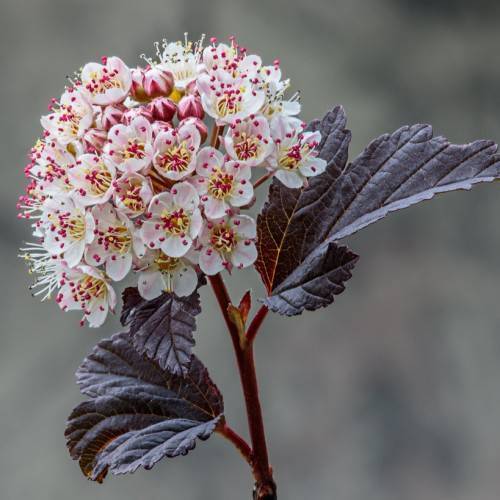
ninebark
Physocarpus opulifolius
Cycle:
Perennial
Watering:
Frequent
Hardiness Zone:
2 - 8
Flowers:
Flowers
Sun:
Full sun,part shade
Soil:
Sandy Loamy Clay Rocky
Fruits:
Fruits In Autumn Ready In Fall
Leaf:
Yes
Growth Rate:
Moderate
Maintenance:
Moderate
watering
Ninebark plants (Physocarpus opulifolius) should be watered slowly and deeply once every week during the growing season, from early spring to late fall. The soil should completely saturate then dry out between waterings. During periods of excessive heat in the summer months, increase the watering frequency to twice per week, giving the soil a thoroughly deep soak. In the winter months, when plants are dormant, decrease the watering to less frequent intervals, saturating the soil completely once every 2 to 4 weeks, depending on the conditions.
sunlight
Ninebark (Physocarpus opulifolius) is a hardy deciduous shrub that typically thrives in an area that receives full sun or partial shade. In order for plants to reach their full flowering potential, they should get at least 6 hours of sun each day. If grown in partial shade, plants may still survive, but they may become leggy and will likely bloom less. If grown in full sun, plants may require more frequent watering. It is best to choose a location that receives morning sun and is partially shaded from the hot afternoon sun.
pruning
Ninebark (Physocarpus opulifolius) should be pruned in early spring before new growth begins. This shrub can tolerate heavy pruning, so it is best to wait until after flowering before removing any dead or diseased branches. When pruning, it is generally best to remove up to 1-third of the stems, taking care to keep the remaining stems in a natural looking form. Be sure to leave some vegetative growth around the base, as this will help keep the plant healthy. Additionally, removal of any suckers that may arise near the base should be done at this time. Finally, the plant may be lightly trimmed to shape the form of the shrub as desired.
